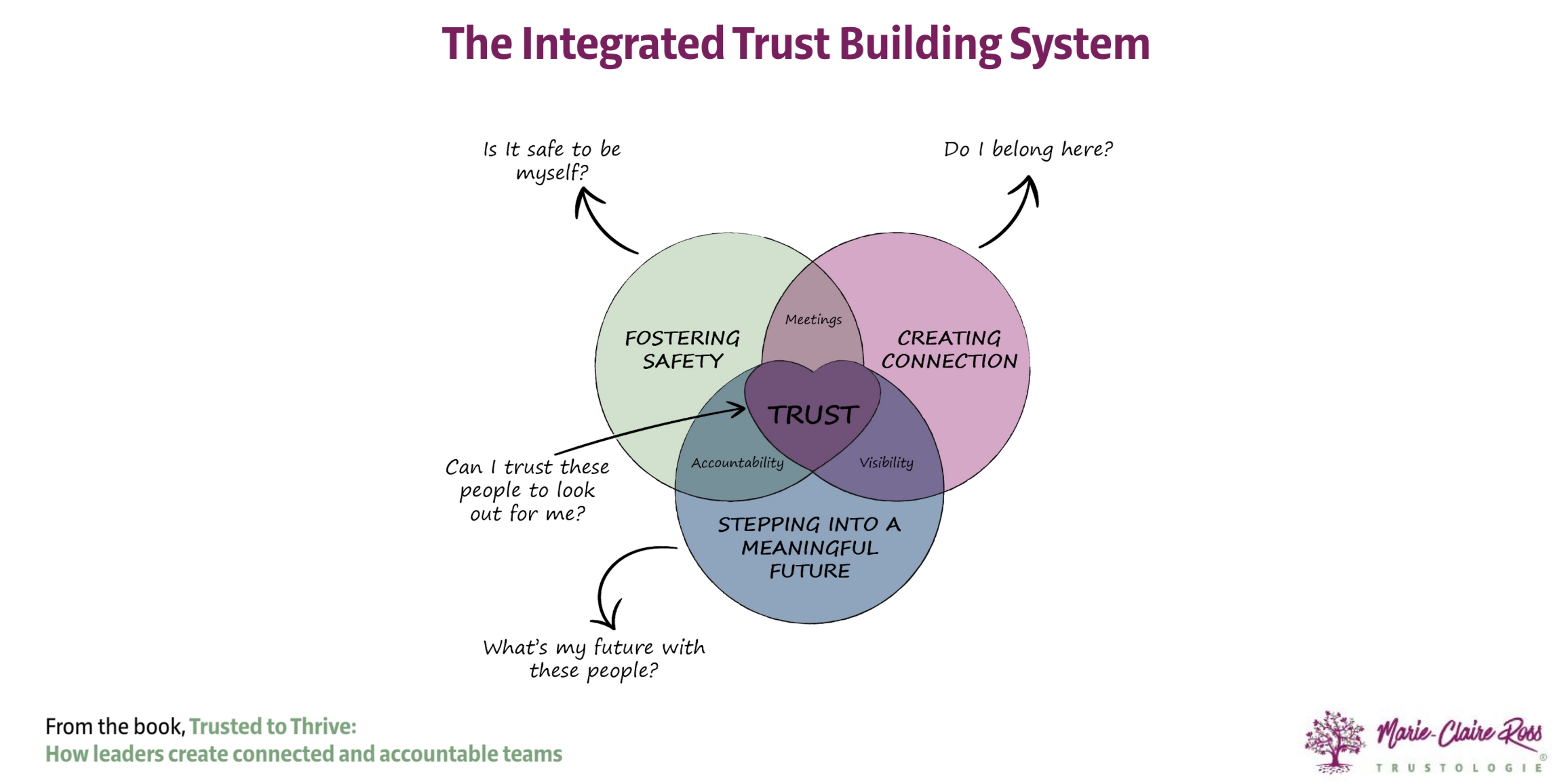
6 Proven Strategies to Sustain a Trusted Team Culture During Uncertain Times
With a lot of business stressors currently in play, a lot of people are feeling uncertain about their future.
Economic optimism is at an all time low. According to the Gartner Global Talent Monitor Survey, Australian employees rate financial wellness at 22.5 percent. While pretty dismal around the world, Australia had the lowest score.
Unfortunately, when people are fearful about their future, they tend to distrust the situation they are in. They can also be quite distracted.
It's more important than ever before that leaders build strong levels of trust with their direct reports and within their teams.
Workplaces require leaders who reassure people that their emotional needs are being met through both verbal and nonverbal communication. Essentially, they communicate that the organisations cares about people, not profit. And that they care about their direct reports - their career pathway, mental health and job satisfaction.
This involves leaders communicating to the part of the brain that manages trust – the mammalian or limbic brain. The part of the brain that doesn’t understand language, but feelings.
So how does a leader engage employees emotionally?
Through using the Integrated Trust Building System which is taken from my book, Trusted to Thrive: How leaders create connected and accountable teams (you can download a free chapter here).

First of all, let's define trust because it means different things to different people. You need to make sure all of your team are aligned to what it means. The best definition that I have come up with is that:
Trust is the ability to confident rely on (and predict) that others will do the right thing and make good on their promises.
So to help employees feel that you have their back you want to ensure you communicate these three factors:
1. Fostering Safety
Every single moment our brains are scanning our environment and calculating whether we can trust the people around us. At work, we need to feel confident that speaking up or making a mistake isn’t going to be a career-limiting move. Our brain asks regularly – Am I safe to be myself? Do I belong to this team? Do we share a meaningful future together?
When these questions are answered affirmatively, it produces trust and psychological safety enabling us to operate at a more sophisticated level.
In contrast, when we don’t subconsciously receive these assurances from our team leader (and team members), we hold back our opinions, information and working with others.
2. Creating Connection
Work relationships are like glue that holds teams together. People are motivated to get up and go to work because of the relationships in their team.
While a team culture takes time to build, people experience it in the present. It's the work friendships that encourage people to do their best and not let anyone down.
When we feel like we don’t belong, it creates self-doubt and fear. People need to feel a sense of connection to their team, to increase their ability to succeed in their role.
Help people feel like they belong and that they are valued for their contribution, in order to reduce self doubt and fear. This is the time to appreciate people more (both publicly and privately) and reinforce that the work that they do matters.
This includes explaining the meaning and purpose of the work to be done and how it helps others. Use more collective language such as "we", "us" and terms like "we'll get through this together" or "we're in this together."
3. Stepping into a Meaningful Future
When we don’t know what’s going to happen next we will push back from committing to goals.
The way to avoid this is for the leader to involve people in a meaningful future. It pulls employees into engagement and out of the low performance zone in the brain.
This requires helping people to feel that their future is better than their present. When people feel unhopeful about the future, we need to show them a way forward.
The most common approach is to paint a picture of the future that helps people feel that their hard work and effort will be worth it. Start with where people are now and where they need to be. Create goals, show progress and celebrate small wins is a proven motivation technique. Everyone feels better when they can see some momentum.
A leader's role is to manage the tension between today's tasks and problems with planning for a better tomorrow. As a leader, leverage the future version of your company to generate potential solutions to the current crisis or conditions. How you prioritise tasks (firefighting versus prevention) sends subtle messages about people's future in the company. Avoid the tendency to overly prioritise tasks based on short term versus long term gains.
Additionally, provide employees with weekly learning opportunities so that people are developing and growing. This can be done through job rotations, assigning new roles, project debriefs, training, mentoring and promotions. Learning supports people in reaching their potential and feeling that the organisation cares about them. It also helps them feel more confident in their capabilities and their ability to withstand a redundancy when they can see that their skills make them more valuable in the job market.
Furthermore, look after yourself. It can be taxing to stay upbeat and hold everyone together on a more positive path.
ACTIONS TO BUILD TRUST
In addition, to the three trust communication practices there are three corresponding actions where leaders practice these communication techniques. Essentially, employees want to see evidence that the organisation and leaders care about people. And they need to feel it through observing how leaders interact and treat people.
The Integrated Trust Building System takes leaders through:
- Effective Meetings and One-on-Ones - Create the best meeting routines and one-on-one discussions to help people perform and work together optimally. Now is the time to introduce emotional check-ins.
- Being Visible - Ensure visibility of tasks and information, while being approachable. This includes visibility of decision-making. During these times, people want to see evidence that the organisation is making the right decisions to ensure the future of the organisation and considering the people within it. Transparency of information and fairness towards employees becomes critical. It's not the time to give top leaders a big pay rise and no-one else.
- Fostering Accountability - Work on techniques to request accountability and model accountability. Leaders who are accountable and admit mistakes appear strong and capable of withstanding rocky times. This works towards conveying a perception of certainty.
At the heart of every high performance team is trust. Your direct reports want to feel that you will be there for them when the going gets tough.
They say that the real test of leadership is during is a crisis. Working on these techniques before a crisis emerges ensures that you will create the trusted team culture that you, and your people, crave.
If you want to learn more about these techniques, then come and join the immersive Tribe of Trusted Leaders Leadership Mastermind. A 12 month program designed to help leaders become more self-aware and better lead teams today. Find out more here.

